Types and varieties of bantam chickens
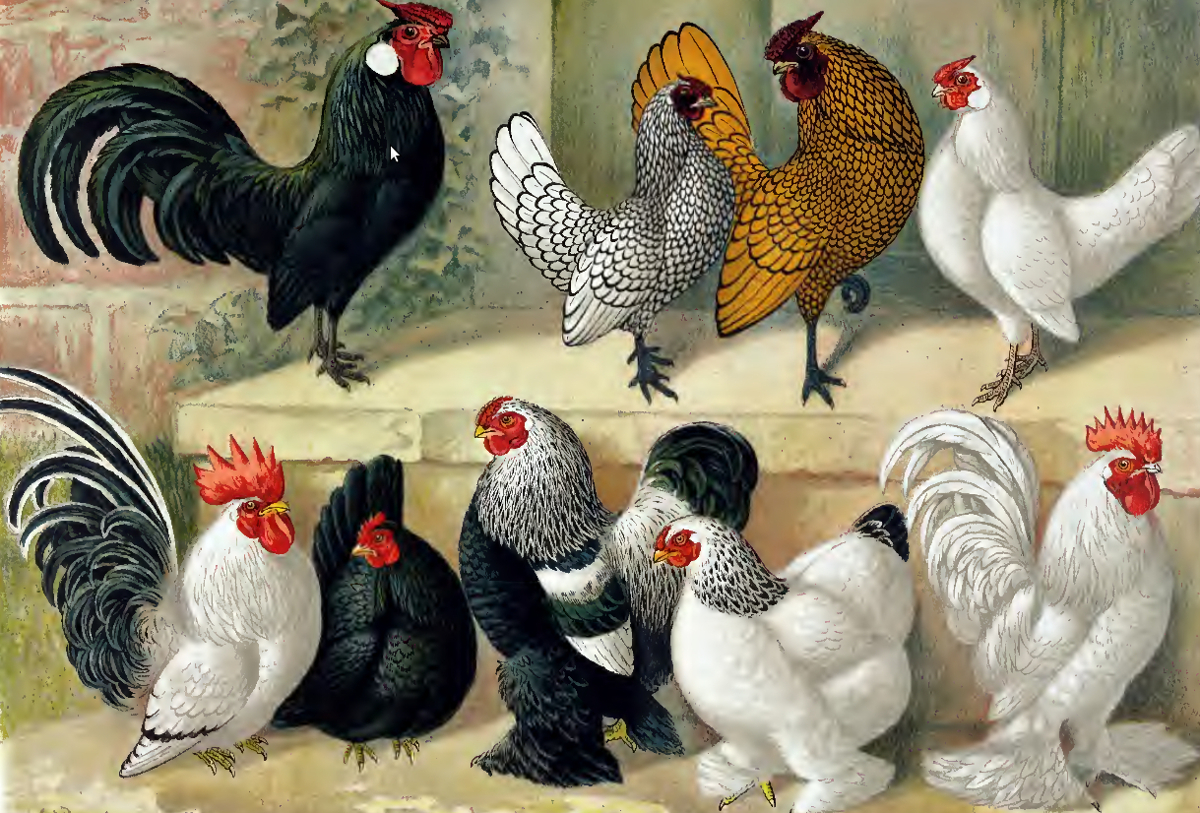
I have kept a lot of bantams over the years and I have loved all of them. My Spangled Hamburgs were proper escape artists and they have all been characters in their own way.
Bantam Chickens: Everything You Need to Know!
If you dream of owning a lively and lovely backyard chickens' flock, which will be delightful to watch and at the same time offer you eggs that are farm fresh, you should consider getting yourself the bantam chickens.
Below:Bantam chickens are an ideal choice if you don't have a very large space, but you don't want many chickens unhappily cramped and stuffed in a small place.

Chicken Breeds are first broken down into two groups. We have the standard chicken breeds which are the large breeds of poultry normally known for their greater size and weight. Then we have the bantam chickens or banties. These are known for their miniature size and better ability to fly.
Some care is required when raising bantams because they can easily fly over your fence and into your neighbours yard if your chicken coop or chicken run is not closed off at the top.
Classes of Chickens:
Chicken Breeds are then noted for their classifications or chicken class.
A Chicken breed's class is normally determined by the chicken's place of origin.
Examples of these would be the American Class, Asiatic Class and the Mediterranean Class.
Below: A Dutch bantam, A European true bantam.
Within the American Class of Chicken Breeds we would find the New Hampshire's, Jersey Giants and the Buckeyes.
Popular amongst the Asiatic Class would be the Brahmas and the Sumatra's.
The Mediterranean Class of Chicken Breeds is famous for Andalusian and the Minorcas. Within the chicken classes there are many chicken varieties. The leghorns are divided colours like brown and white leghorns.
Do bantam chickens have a certain advantage over the regular chickens?
We present to you every necessary fact about the bantam chicken that you should know. But let's understand first how bantam chickens are different and better than the standard chickens?
The biggest difference between standard and bantam chickens is the size. Bantam chicken breeds are normally 1/4th or 1/5th size of the standard chickens.
Below: the chicks are smaller than regular fowl as well.
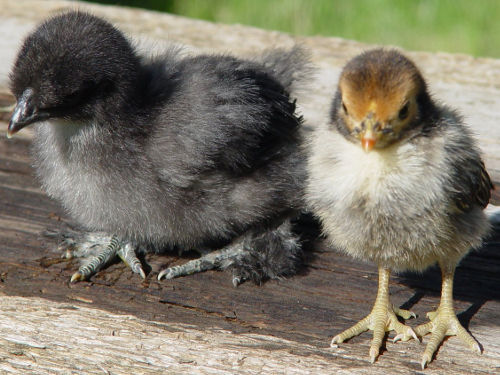
Bantam chickens lay eggs that are smaller than the regular hen eggs. However, a bantam egg contains less white and more yolk. So, now that we understand how the bantam chicken breeds are different from the regular chicken breeds, let's try and understand the bantam chicken types better.
How are bantam chicken different than the standard chickens?
The first thing that anyone will notice about the bantam chickens is the fact that the bantam chickens are actually the miniature version of the regular chickens.
Below: Being smaller means they are easier to handle.
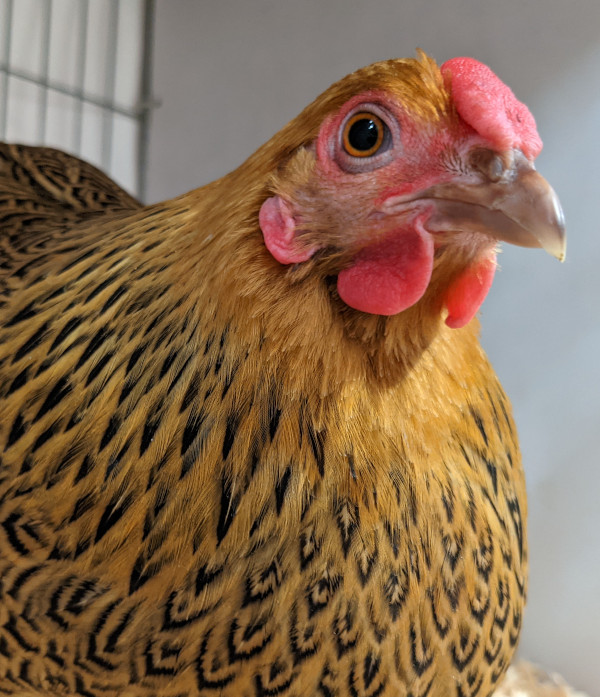
The word "Bantam" came from Bantam, Indonesia's seaport. When the sailors stopped by the port to get fresh water and food supplies, they noticed the local chickens.
The small size of the chickens was the striking thing that the sailors noticed. With time the word "Bantam" became "Bantam" and the small chickens were known as the bantam chickens.
Bantam Chicken Classification:
Broadly the bantam chicken breeds can be classified into three categories.
1. True bantams: The "true" bantam chickens have no larger fowl counterpart and they occur naturally without any input from mankind. Examples: Rosecomb, Sebright, and Nankin
2. Miniaturised bantam chickens: The miniaturised bantams were bred from the standard breed like Orpingtons, Cochin or Rhode Island Red.
3. Developed bantam chickens: The developed bantams are the smallest breeds that were developed with time and with mankind's help. The origin of developed bantam chickens' origin is still sketchy. Example of developed bantam chickens is Japanese, Pekin or Cochin, and Belgian.
Developed bantam chicken breeds are confusing sometimes. For instance, the Barbu D'Uccle has no larger fowl counterpart, which makes it a true bantam chicken. However, this bantam chicken breed was created by Michael Van Gelder of Uccle, Belgium sometime around the year 1903 by cross-breeding two or more bantam chicken breeds, so arguably it can also be considered a developed bantam breed!
Types of bantam chickens:
There are many types of bantam chicken that you will find. Here is an overview of a few types:
1. Brahma Bantam
Brahma Bantam is a small and wonderful version of the full-sized breed. Much similar to their bigger-sized doppelgangers, Brahma bantams are usually quiet and gently, cold, hardy, and are often considered as a wonderful pet.
A Brahma bantam hen can lay very well and are excellent setters. The Brahma bantam hens are also excellent mothers. The Brahma bantam looks very appealing; it has a vibrant and bright golden body. The tail feathers are black with black laced hackles. The Brahma bantam is a stunning and fascinating bird.
2. Barred Plymouth Rock Bantam
The Barred Plymouth Rock bantams are widely considered as a perfect backyard chicken that you can include in your flock. They, much like their bigger-sized counterparts, have a certain personality. The Barred Plymouth Rock bantams are usually personable and friendly.
The Barred Plymouth Rock bantams are cold and hardy and can be a useful addition to your backyard flock when the climate is cold. These birds usually range freely, but it will take almost anything it gets. They can also stay in confinement for a long time, which is a sign of great adaptability.
3. Mille Fleur d’Uccle Bantam
The Mille Fleur d’Uccle Bantam is an eye-catching and showy kind of bird. The name, "Mille Fleur d’Uccle Bantam" means a thousand flowers in French. As the name suggests this bantam chicken is about its wonderful looks; its plumage glows before the eyes, with very pretty feathers that appear after the first moult of the bird.
The Mille Fleur d’Uccle Bantam has both bushy beard and heavily feathered legs. These bantams are considered as a true bantam, which means they don't have any standard-sized counterpart. It is an ornamental breed and is friendly and sweet birds.
4. Cochin Bantams
Cochin bantams are known for their calm disposition, which makes them an ideal breed choice. The Cochin Bantams have a fluffy appearance. Originally, the Cochin Bantams originate from China and are also known as Pekin bantams. When a Cochin Bantam hatch eggs, they become an excellent mother.
Cochin Bantams need very little space and they have a wide range of color varieties, such as red frizzle, white, black, mottled, barred, golden laced, partridge, and buff. They are an ideal choice for family flocks.
5. Silkies
The Silkies look silly but are very sweet! They are probably the most adorable bantam chicken. They are petite, which makes them an excellent choice for a pet chicken. Silkies are possibly the most popular bantam chicken type. They have a very gentle temperament, which makes them the ideal companion in the household.
Below: A show quality Silkie.
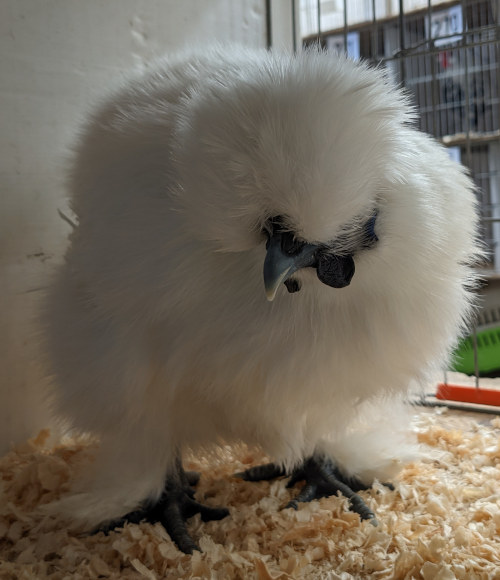
The Silkies' no-fuss attitude and demure size make them the perfect choice for any kind of flocks - either suburban areas or urban areas. The Silkies are true bantam and can go broody when it hatch eggs. One of the best features of Silkies is that it can survive in warm climates, unlike many heavier and bigger breeds.
How to care for bantam chickens?
In most cases, bantam chickens don't usually need anything different compared to the standard chicken breeds.
Bantam chicken breeds are smaller in size and that is the reason they have a high metabolic rate, therefore, many bantam chickens feel lower temperature or cold more as compared to the large hens. The Dutch and Japanese bantams are observed as not being tolerant to cold.
The bantam chickens can stay in places that are draft and dry proof. You will notice that the large fowls require a coop space of 4 square foot and a run/per bird's space of 8 square foot.
Bantam chickens need much lesser space. Usually, they need 1 square foot per bird, but 2 square foot is the preferred space for the coop with 4 square foot for the run. Since they require a lot lesser room compared to regular chickens.
Therefore, some bushes and small trees can be ideal for them, you can put on perches of different sizes.
Remember that bantam chicken breeds are great flyers, so you should be careful about putting them in the coop. You should make sure that you keep high perches so that they can't fly away. You need to cover the area, which will also save them from owls or hawks.
What to feed bantam chicken breeds?
The bantam chicken breeds will need the appropriate water and food. Therefore, the supplements that you feed them should include electrolyte/vitamin powder monthly, calcium and grit, with any suitable scraps.
A bantam chicken consumes 10 lb feed per month.
Keeping them with standard breeds:
You should be very careful if you think of mixing your bantam chickens with the standard breeds.
Due to their smaller size, they can be easy targets. However, they can escape easily as they are great flyers. They can also manoeuvre and evade between large chickens.
Do Bantam Chickens require any special care?
Bantam chickens can live till 7 or 8 years, but can live to 12.
Many varieties of bantam chicken breeds are 'sablepoots' or feather legged. Such types of bantam chickens need their pens as relatively muck/mud free, or else the foot feathers will get incredibly dirty and crusted.
If the bantam chicken gets into mud more, then you can consider adding construction sand or some pebbles to the place or area. You can seed the area with grass if the area is dry; if you have space left then you can also try planting a few shrubs. During early spring, you can try adding three buckets of mulch around the door.
It will break down easily, and provide enough dirt where they can scratch all they want! It will keep their feet cleaner. If you notice their feet are getting crusted with poop and dirt, then you should consider getting them a 'foot bath.'
Making the bantam chicken stand in warm water can get the dirt off. Working gently at the bird's feathers can be relaxing for it too. You should keep in mind that these are small birds and you should be careful about using too much force on them, as compared to the standard chickens.
Remember, the bantam chickens' foot feathers can easily get broken and lead to excessive bleeding. For such cases, keep styptic and baking powder handy; carefully press the bleeding area and put firm pressure. It will stop the bleeding.
Feather-footed bantam chickens can also get scaly mites easily on their legs. These mites can multiply very fast and because of the feathers, you may not notice them. Therefore, you should check them regularly, preferably once every month.
Bantam Chicken Disposition:
As mentioned earlier, the bantam chicken breeds lay eggs that are of much smaller size compared to the normal chicken eggs. They are usually half the size of the standard eggs. Just to get an idea: when it comes to cooking the eggs, its 3 bantam chicken eggs for 2 standard chicken eggs. However, bantam chickens lay eggs very frequently.
Many bantam breeds start laying eggs when they are almost eight months old, and they are consistent after that. When you compare their ability to lay eggs with the capability of a standard chicken, the bantams lay far more eggs than the standard chickens. The standard bantam fowl's eggs are slightly bigger in size as compared to the true bantam chickens' egg size.
Some bantam chicken types are regular brooding hens, but not all. They are great protective mothers. Interestingly, even the standard chickens don't mess with the bantam broodies.
You can consider keeping two bantam broodies for hatching out the standard eggs. They are reliable and although they cannot cover all the eggs, they would still try and defend.
Are the bantam chickens aggressive?
To answer that question we need to know more about the bantam chickens’ behaviour and nature. However, generally the bantam chickens are not aggressive, in fact, they are known for their friendly nature.
Below: Bantams are often more friendly.
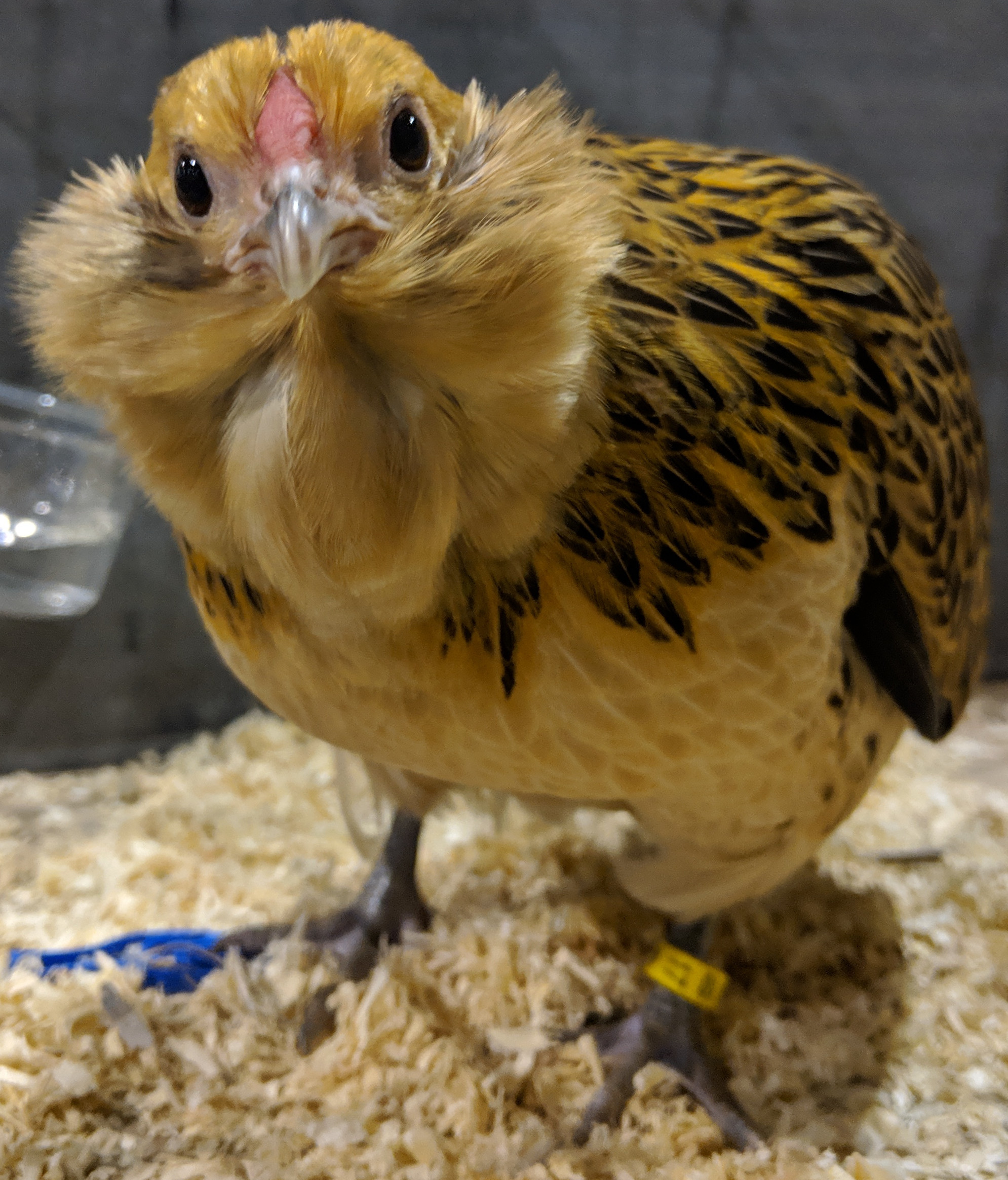
Bantam chickens are generally known for their sweet temperament and are normally friendly to chickens and humans alike.
The roosters are normally sweet but can get pretty aggressive during the season of mating. Overall, the bantam chickens are not dangerous and do not cause much trouble, even when they are around standard chickens.
What is the most sought after Bantam breed?
I see so many beautiful Bantam breeds. At shows they seam to be more Bantams than standards. So whats the top sought after Bantam?
Here is the top 7 bantams in the last poultry show I went to:
1. True bantams
2. Old English
3. Silkies
4. Wyandottes
5. Pekin
6. Dutch
7. Rosecomb
By numbers shown.
Wrapping it up!
There you have it: Everything you want to know about the bantam chickens. Now that you have understood the bantam chickens, we are confident that you will consider getting bantam chickens for your flock.
Bantam chickens solve a lot of problems, such as the problem of space, maintenance cost, etc. You will get a wide variety to choose your bantam chicken from; you may go for plain or barred, speckled or a mile fleur!
Having them can help you in many ways. They are not expensive and they are not very difficult to maintain as well. The bantam chickens are entertaining, curious, and joyful creatures.
Bantam chickens are perfect for any household as they don’t need much space to live. Now that you know how wonderful these small birds are, I’m pretty sure that even you would want to bring a bantam chicken home!
